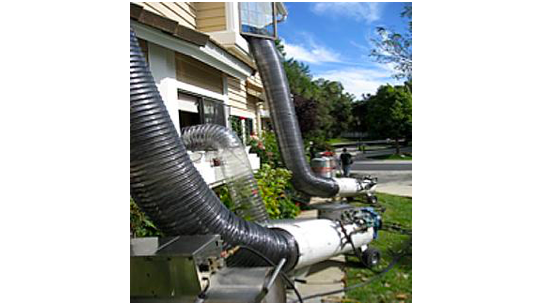Bed bugs are a fairly common household problem. While it is really easy to find out if your house is infested with bed bugs; it can be difficult to get rid of them. Unless the treatment is effective in totally exterminating all the bugs and their eggs – you will find your house re-infested in a very short time. However, there are ways to get rid of these bugs. This is where it starts getting confusing – which, out of the many methods available, is the most effective? While the answer to that would depend on various factors, here are two of the most reliable and common methods used by pest exterminator companies.
Heat Treatment for the Whole Room
Heat treatment is exactly what it means – increasing the temperature inside the room to kill bed bugs. Jordan Larson from CustomBedBug.com says that heat extermination treatments are able to get into every space bed bugs may be hiding. All animals have a temperature threshold beyond which they cannot survive. For bed bugs and its eggs, prolonged exposure of about ninety minutes at 48°C (118°F) will kill them. Exposure to a temperature above 50°C (122°F) will, however, kill them instantly.
How Does it Work?
Specially designed equipment for heat treatment is used by professional pest control companies/individuals to increase the temperature to the required degree. However, before the treatment starts, remember to remove everything from the room which can suffer damages or melt at temperatures over 150°F. The room temperature during the heat treatment process is raised between 57.2°C (135°F) and 62.7 °C (145°F). The pest control professional will place thermometers at various locations in the house to monitor the temperature inside; making sure that it is high enough to kill the bed bugs and the eggs. Depending on the size of the area under treatment, the entire process can take between six to eight hours to complete.
There are no residual effects on heat treatment. However, if other preventive measures are not applied, the chances of re-infestation are high. One such preventive measure can be an insecticide treatment applied along the walls/borders of the treated area.
Treatment by Insecticides
While insecticide treatment can have residual effects, unlike heat or freeze treatments, they are very effective for exterminating and preventing re-infestation of bed bugs in your home. Most pest control professionals will utilize three different types of insecticides to maximize the impact and achieve optimum results.
- 2The first type is a contact insecticide – this kills bed bugs and the eggs on contact and is used on surface areas like sofas, carpets, etc. This type of insecticide is very fast-acting and leaves little or no residue.
- The second type is a residual insecticide – this is used to cover the insides of and the areas below the furniture.
- The third type is a dusting insecticide – this is dusted into all the crack and crevices of the furniture as well as the fixtures in the room.
While treatment by insecticides would take anywhere from half an hour to a couple of hours, depending on the size of the area being treated, you need to wait for the insecticides to dry/settle before entering the premises. An experienced pest control professional is the best judge to tell you when it is safe for you and your pets to re-enter the room.
Hire Bed Bugs Heat Treatment Services
Insecticides treatment might involve further applications, depending on the severity and chances of re-infestation of bed bugs. Exterminating bed bugs involves specialized equipment and hazardous chemicals – it is best left to the professional pest controllers to do the job.

